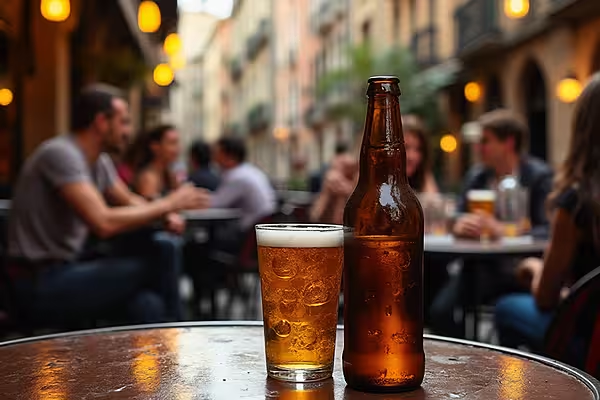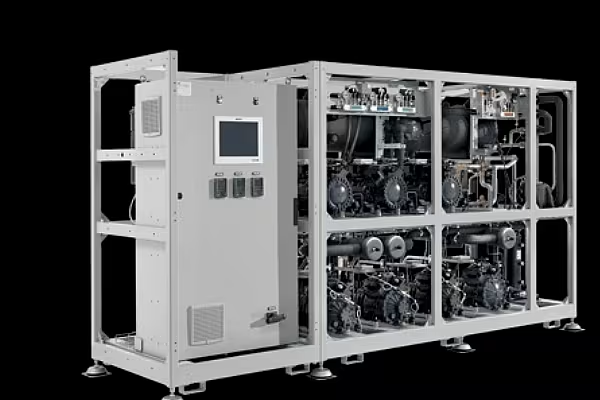Barclays recently released a report, titled The Future of Global Alcohol, which examines how demographics and economics shape alcohol consumption.
Working with its Investment Sciences team, Barclays identified and quantified this relationship, using forecasts to identify the potential geographies that will be the winners and losers of the global alcohol market.
The report picked up on some interesting trends in alcohol consumption in Europe, and we look at some insights from France, Italy, and the UK.
France
France’s alcohol trends have been ‘remarkably stable’ in recent years. Barclays noted that it has one of the highest per-capita TBA (total beverage alcohol) consumptions in the world, but this level has been gradually reducing.
Of all the countries analysed, France is second only to Italy as a wine-dominant consumption profile, with more than half of alcohol consumed from vinous means.
Additionally, spirits in France are almost twice as popular as beer, and Barclays has seen minimal changes in these ratios over the past decade.
It has, however, seen a constant reduction in consumption. Barclays noted that French people are drinking less each year, but largely ‘the same stuff’.
France is second only to Italy as the most premium beer market in the Barclays analysis, with 71% of beer spend in the country going to premium offerings.
‘It is not lost on us that both of these countries are heavy wine drinkers, and we hypothesise that there may be a link here, although we cannot be conclusive here without further investigation,’ according to the authors of the report.
‘Perhaps surprisingly, this premiumisation does not flow through to the spirits market, where only 21% of spend is premium or above.’
Italy
Barclays believes that Italy is in a ‘challenged demographic situation’ because there is some migration into the country, but not as much as there has been historically. The report argues that this is compounded by one of the worst demographic compositions, with the working-age population forecast to decline by 7.6% over the next decade.
Italians drink about eight litres of alcohol per person each year. This has been relatively static since 2010, although it saw a material uplift during the pandemic – it hit 8.5 litres in 2022.
Barclays expects this to be a short-lived pandemic-related change, with a reversion to approximately eight litres in the years to come.
However, over time, ‘extremely weak demographic factors’ combined with softening economics leads Barclays to believe that Italy’s alcohol market has likely peaked.
Wine is the favourite alcohol for Italians, contributing 70% to its TBA (this is the highest in Barclays’ data, although France consumes more wine, in absolute terms, per capita).
Beer has been taking PCC (per-capita consumption of each beverage type) value share, rising from 22% to 28% between 2009 and 2019.
During the pandemic, this fell to 22% in 2020, although this gradually rose back to 25% in 2023. Spirits have maintained a 4-5% share throughout the past decade or so.
Barclays singles out Heineken for success in the Italian beer market, with clear share gains in the decade before the pandemic. Heineken had 26% of the market in 2010, which had risen to 32% in 2019.
However, since then, Heineken has seen no additional gains, with it sitting at 32% in 2023. The same is true for the second and third players – Asahi and ABI, respectively – each having an approximate 15% share, largely unchanged over the past few years.
Barclays notes that the spirit sector shows a similar trajectory. Campari is the market leader, with a 22.3% share in 2023 – up from 19.5% in 2014.
The report suggests that this will be aided by the key category in the country being flavoured spirits (such as Aperol and Campari), with 47% of spirit sales.
‘For individual companies (particularly Heineken and Campari) there is further potential for market share gains, given their prior success,’ according to the report. ‘But for others, we see limited growth opportunity, unless the spirits companies can capitalise on the growing popularity of gin.’
The UK
The UK is an interesting case study when it comes to alcohol consumption.
The report shows that TBA per-capita consumption (PCC) has been declining, but categories have been able to premiumise, with spirits emerging as the ‘clear winner’.
On a country level, the PCC of alcohol in the UK has broadly been declining since 2007.
‘Spirits growth is much more correlated to macroeconomic factors,’ according to the report. ‘On the other hand, we see that beer growth is more linked to demographics. When we isolate the factors that are most correlated to both spirits and beer volume growth, we see that forecasted growth rate for these metrics in the UK isn’t particularly favourable.’
Over the last decade, the UK spirit market has grown at a 5.2% CAGR. Within this growth, Barclays notes that the standout categories have been gin, but also Irish whiskey and tequila, although the latter two have grown off a much smaller base.
All three of these categories have roughly doubled their value share of UK spirits over the last ten years. Within this, Barclays notes that the UK spirit market has consolidated into the hands of the top two players: Diageo and Pernod Ricard.
In 2013, Diageo’s market share was 27.6%, which had increased to 29.6% by 2023. Similarly, Pernod Ricard increased its share from 6.6% to 9.1% over the same period.
According to Barclays, ‘With respect to premiumisation, the data is very clear: the more premium the price segment, the faster the growth.’













